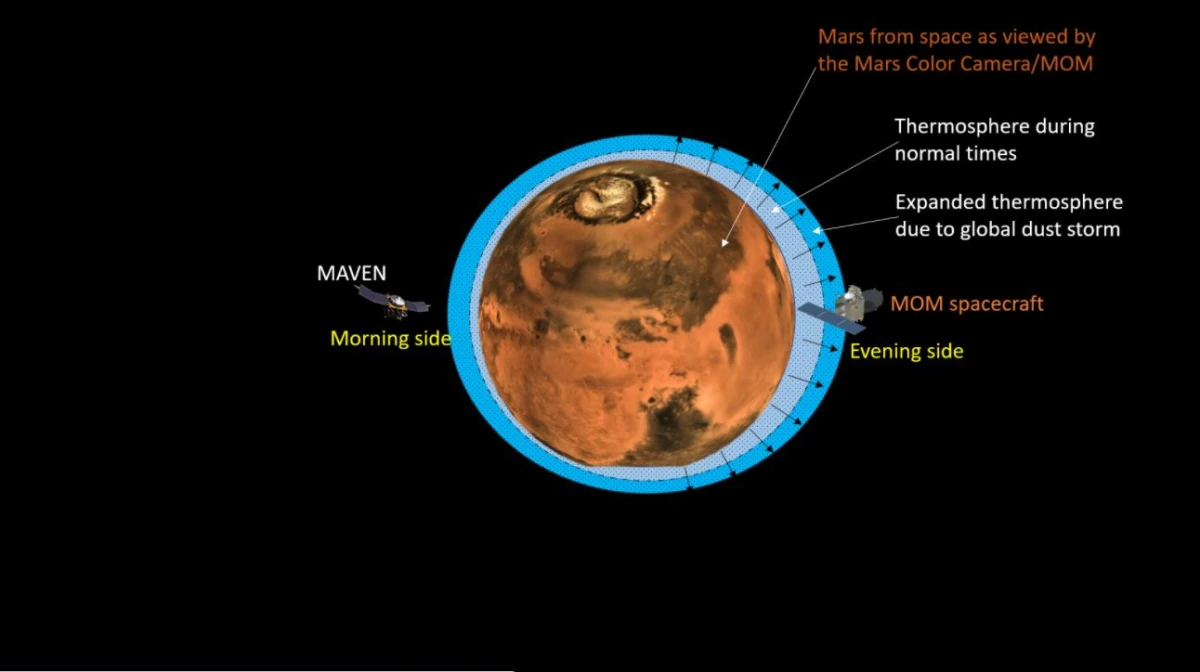
SOURCE: INDIA TODAY
Mars is losing its atmosphere to outer space at a faster rate, a study of data and images sent by Isro’s Mars Orbiter Mission (MOM) and Nasa’s Mars orbiter Mars Atmosphere and Volatile Evolution (Maven) has found.
According to a report in The Times of India, Mars, being relatively smaller planet compared to Earth, is losing its atmosphere at a faster rate.
Why is Mars losing its atmosphere?
Though other terrestrial planets in the solar system are also constantly losing their atmospheres to outer space, the rate at which this loss happens is determined mainly by the size of a planet and temperature of its upper atmosphere, the report said as quoted by TOI.
Indian Space Research Organisation (Isro) on Wednesday posted on its website these findings of scientists who had studied data and images sent by MOM and Maven about a global dust storm that enveloped the Red planet in June-July 2018. Such a global storm is one of the dynamical meteorological phenomena on Mars.
Isro study on dust storms on Mars
An Isro statement said, as quoted by TOI, “In the first week of June 2018, a global dust storm, also called a “planet-encircling dust event”, started growing on Mars and it had grown to its mature phase by the first week of July. Such a storm significantly heated and expanded the Martian upper atmosphere. The heating and expansion of the global dust storm led to a part of Mars atmosphere quickly reaching the exobase altitude (which lies at 220 km). Any hot gases above the exobase altitude are more likely to move to further higher altitudes and subsequently escape to outer space. Hence, from the results of the present study it can be inferred that the 2018 global dust storm resulted in enhanced escape of the Martian atmosphere.”
MOM observed the evening side of Mars by diving down to altitude as low as 155 km. The Mars Exospheric Neutral Composition Analyser (MENCA) instrument, a mass spectrometer onboard the Isro orbiter, measured the neutral densities of the Mars’ thermosphere (which lies between 100 and 200 km).
By analysing these measurements, scientists at the National Atmospheric Research Laboratory, Gadanki, Andhra Pradesh, found that Mars upper atmosphere was undergoing warming and expansion. As the dust storm slowly engulfed Mars over a month period, scientists found that the neutral densities in the Mars thermosphere increased significantly. Such an increase was also confirmed by Nasa’s Maven mission, which was simultaneously measuring the Martian thermosphere on the morning side, the statement said. as quoted by TOI.
Isro’s MOM
Isro had launched MOM on November 5, 2013. On September 24, 2014, the Rs 450-crore MOM was placed in the Martian orbit. Though the Mangalyaan mission was initially meant to last six months, it is still alive and sending images from time to time nearly seven years after its launch and since then has made several key findings about the Red planet.






